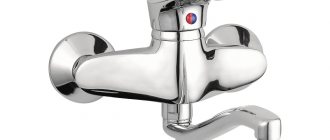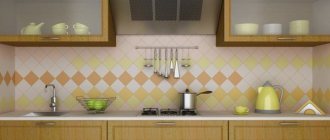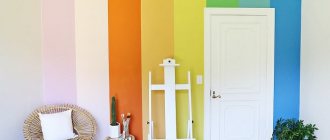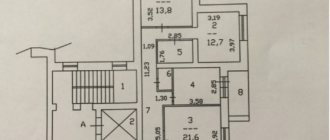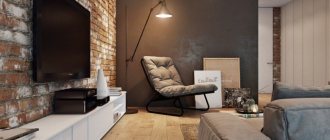Dampness on the walls is a common problem that can appear not only in an apartment, but also in a private house. It must be addressed immediately, because when the walls and corners become damp, not only the wallpaper begins to darken and peel off, but also mold appears.
Dampness on the walls can contribute to the emergence of various diseases, and become a gathering place for insects, mites and fungi . If the wall becomes damp, then you need to act immediately, and this article contains an analysis of the reasons and ways to solve them.
Why does this happen?
An apartment or private house often suffers from two or even more reasons. And increased humidity on the walls can appear at different times of the year. For example, in winter it is typical:
- Freezing of walls;
- Poor ventilation;
- Mold.
And at other times of the year, high humidity inside and outside the home is most common.
Now in more detail. Why does the problem of damp walls in the house arise?
External moisture
This problem is typical for apartments located on upper floors with a poor drainage system.
Solar heated ventilation - economical protection against wet walls
A private house, hangar, garage, bathhouse or industrial premises - a solar air collector can be installed in any room.
Installing such a collector provides the room with proper ventilation without requiring electricity costs.
The device saves on maintenance since its design is extremely simple. Can be installed on a roof or wall. In addition, unlike devices powered by electricity, a solar battery is fireproof and environmentally friendly.
Consequences of wet walls
From the first days it may seem that wet walls will go away on their own. For example, after rains they dry out. But if a problem has appeared, it will appear more and more often. And then it will be very difficult to fix it.
As the wet walls continue, bad consequences will appear such as:
- An odor similar to that in the basement will appear.
- The wall materials will begin to deteriorate and peel off. Putty soaked in moisture will come off in whole layers and crumble, because its structure will be damaged. Then you will most likely have to pay for repairs.
- With flooring and wood coverings, the floor may become deformed. Because of this, creaks and cracks, as well as cracks, will appear.
- Furniture standing near such walls will also fall into disrepair.
- The moisture level will rise, which will negatively affect the health of humans and pets. When humidity is more than 60%, the risk of developing respiratory diseases and their exacerbation increases.
- Also allergies. It can also worsen or appear.
- A favorable environment will be created for microbes and bacteria, as well as fungi, including mold. These small living organisms also have a very detrimental effect on health.
- Skin rashes will appear. And if there are wounds or cuts, they will heal worse or even rot.
- It is also worth highlighting such an item as a poor microclimate for children. The fact is that their body is underdeveloped and susceptible to diseases. Thus, the child may suffer greatly.
As you can see, the consequences can be quite dangerous. It's time to talk about how to deal with dampness.
Warm baseboard to solve the condensation problem
A patented baseboard heating system, developed and manufactured by Russian specialists, is installed along the perimeter of the room along all external walls. Radiant heat warms up bodies, walls, floors, ceilings, furniture, and objects begin to radiate heat.
Heating using the “warm baseboard “Mr.Tektum” system:
- form a heat shield that does not release heat outside;
- get rid of condensation and eliminate the possibility of its occurrence even in damp rooms;
- simultaneously solve the problems of damp walls, dryness and dust in the air;
- ensure savings of 30% energy;
- emphasize the style of the interior thanks to different colors and textures of the plinth.
A warm baseboard does not use convection, which means it does not form a thermal cushion under the ceiling and does not contribute to air drying. It is safe for people, plants, wooden furniture, parquet, and works of art.
What to do
If such a situation arose after renovation, then it is enough to ventilate the rooms more often. If this is a cold period of time, then it is important that the room is warm enough.
If the batteries are not enough, you can use additional heaters. When the problem lies in ventilation, you can try to remove foreign objects that interfere with normal air circulation.
Insufficient waterproofing is a more complex problem. It is important to find the place where the water comes from and isolate it well. The main source is seams on the outside of the house. This task should only be solved by specialists.
Useful video webinar about wet walls and insulation. How does this happen and how to solve it.
Get rid of moisture outside
You can and should immediately begin to solve the problem if you know the reasons. Ventilating and heating is not the best idea, as it partially eliminates dampness. It's best to do something like:
- Isolate the weak area. To begin with, the problematic piece should be dried, the finishing removed, and insulated with bitumen mastic. And only then apply a deep penetration primer. The last stage will be plastering and wallpapering.
- Fix leaks. Most often the pipes will have to be replaced. It will often be impossible to do this on your own, especially in an apartment. This is done by special services.
- Sealing the seams between the wall and the balcony slabs. This way the problem will be solved not only with leakage, but also with cold.
- Floor treatment. If you have a basement and it is located under your house, then use a deep penetration primer. It penetrates into all the smallest pores and closes them. Then the joints are sealed and a waterproof base is laid.
- Foundation Insulation. Moisture enters the walls when groundwater rises above 1.5 meters. Under such circumstances, the corners and walls under the baseboards in the apartment will become damp. Horizontal insulation can solve this problem.
It is worth considering that sealing seams in one part of the apartment will only get rid of the problem for a while. For high-quality and long-term service of the building in proper condition, it is necessary to make repairs throughout the entire house.
Strengthen and correct ventilation
If the ventilation in the house is poor and the walls are wet, then you need to restore the ventilation. At the local level, this is very simple to do - you need to move the cabinet or other furniture. To clean the ventilation itself, you will need to remove the blockage in it. This can be done manually and using a vacuum cleaner.
For proper and high-quality ventilation in a private home, you need the help of specialists.
Disruption of air flow is caused by a violation of the layout or its change on the upper floors in a brick or panel house.
If the traction is still weak, you can strengthen it further. To do this, you need to make slits at the bottom of the doors. This will improve air circulation and traction will be better.
You can resort to using a special device to quickly dry damp walls. Such a device is inserted behind the grate in the kitchen and bathroom. Sometimes it has a timer as well as a valve. The hood should be checked every 3-4 months.
Get rid of moisture inside the house
If there is excess moisture in the house, then first of all you need to ventilate the room. It is especially important to do this for those who have plastic windows installed. They fit very tightly, which makes it bad for ventilation. In rooms where such windows are installed and the moisture level is high, it is recommended to open the windows for ventilation as often as possible.
Another way to get rid of high humidity is to install heating or purchase additional heat sources. At low temperatures, the moisture concentration becomes higher, so this option is very promising.
The third option would be to purchase a special device - a dehumidifier. It will make your stay in the apartment comfortable and safe by leveling out the moisture level.
Insulate the room
Living in a cold, damp apartment is not comfortable, and it is also a health risk. There are several options to solve this problem. The first is to insulate the room using stronger heating. This method has a right to exist, but it requires an increase in heating costs.
The best way to prevent freezing is to insulate external walls. For owners of the first floors or private houses this will be possible. If the problem starts from the 2nd floor, then professional industrial climbers will deal with this.
You can also insulate the room from the inside. This method is not good. There is a risk of condensation accumulating under the insulation, which will also lead to a deplorable situation and the problem will get worse. Crack and mold will develop.
If the walls are not thick enough, an additional layer of cladding should be made. Brick is often used for this purpose.
Remove mold
Since mold can cause serious consequences, it should be removed quickly. To do this, the following procedures are carried out:
- The facing layer is removed. At this stage, you need to wear special clothing and a respirator to prevent small dangerous particles from entering your lungs. Mold should be removed using a spatula and a metal brush.
- Antiseptic treatment. It is possible to use homemade remedies. This includes: baking soda, bleach, vinegar. The best choice is to use specialized tools.
- After 2-3 hours after treatment, you need to brush again. This is done in order to eliminate mold decay products. After this, it is treated with warm water and dried using technical devices.
- After 24 hours, coat with a deep penetration primer in several layers.
- Apply plaster. It is better to choose materials with antifungal and water-repellent properties.
- Wall decoration. You can paint or wallpaper.
Where does condensation on the window come from?
Condensation on plastic windows causes mold and mildew to appear on slopes, walls and ceilings, excessive air humidity, rotting of the root system of indoor plants and, finally, it simply looks unaesthetic.
The main reasons for the formation of condensation:
- uneven and insufficient heating;
- poor ventilation;
- excessive humidity.
From a physics point of view, this phenomenon is explained by the concept of “dew point”. The dew point value is the temperature at which the air can no longer hold moisture. When the room temperature drops below the dew point, moisture condenses and falls on the coldest surface in the room - that is, on the window glass.
Where to contact
If all possible options for eliminating dampness do not help, then you need to write and submit a statement to the management company. In 2022, it will be drawn up in writing and in two copies. The paper should contain detailed information about when the corners or walls began to get wet, and an exact indication of the location.
ATTENTION! After submitting your application, it is important to ensure that it is recorded. The applicant must keep one copy with a mark.
The next action of the management company should be to send a technician to inspect the residential premises, based on the results of which a report on the presence of dampness and the reasons for its occurrence will be drawn up. The apartment owner must request a copy of this document.
As soon as the act is drawn up, the management company must decide on the option for repair work, as well as the time frame by which it will be completed. It is advisable for the apartment owner to take a copy of each document. If the repairs are not carried out or the period is significantly delayed, then these copies can be contacted with the relevant authorities.
Sample application to the Criminal Code
Sample complaint to the Housing Inspectorate
Then you can file a complaint with the housing inspectorate. It can also be submitted collectively, where all participants sign and the date is indicated. Such a complaint is considered within 30 working days. However, practice shows that it is considered in a shorter period of time. Most often this happens within 14 days.
Sample application to the Prosecutor's Office
The next authority you can subsequently contact is the prosecutor's office. A complaint to this body must be made in free form. As a rule, it is filled out in an official business style.
Obscene language and the use of jargon are unacceptable. And also you shouldn’t rate the problem. You need to restrain your emotionality. The government agency has the right to leave such applications without consideration.
Another important point is that errors, whether punctuation or spelling, should not in any way affect the acceptance of the complaint. At the end there is a signature and date.
Sample application to the Court
The last authority to which you can turn is the court. It should finally resolve your problem. But most often it all ends in the previous organs.
Methods of floor insulation
Insulating only one floor will not completely solve the problem, but will most likely only be an additional measure. There are two options for insulation - cosmetic and permanent. Let's look at both in more detail.
Cosmetic
This type is less effective, but also simpler. To carry it out you need:
- Remove the floor covering, lay foamed polyethylene at least 6 mm thick or cork sheets on the base.
- Install a high plinth around the perimeter of the external walls.
Important! Be sure to lay insulation between the wall and the baseboard.
- If there is no heat-insulating deformation tape between the wall and the base of the floor, then it is necessary to cut the joint with a grinder and insert a strip of extruded polystyrene foam or polyethylene foam into the resulting strip.
If the problem of freezing of external structures is properly addressed, additional floor insulation may not be necessary.
Capital
This option will significantly increase the floor level:
- To implement it, it is necessary to lay insulation on the base or pour a cement-sand screed.
- You can also put rigid foam glass and fill it with a layer of leveling.
- You can also lay a plank floor on the joists, while insulating them. This is a labor-intensive process that will require effort and time.
Important! How to carry out a major overhaul by installing an eco-friendly plank floor - for detailed instructions, see the article “Installing a wooden floor on joists.”
Causes of dampness
The sources of dampness in the corners of rooms can be obvious or hidden. Some are easy to spot, while others will require searching. However, all the reasons why corners in the house are constantly damp are divided into two subcategories - internal (poor ventilation, insufficient heating) and external (increased thermal conductivity of the wall, penetration of water from outside, etc.).
Damp and blackened corner
Dampness often appears in the corners of a room in the following cases:
- the wall is “leaking” (water can enter through cracks in the wall from the attic, drainpipes or eaves);
- the wall freezes (the corners are “crying” because a “cold” bridge has formed due to the increased thermal conductivity of the walls);
- heating in the room is insufficient;
- there is no ventilation or it is ineffective;
- fungus has formed on the walls;
- the foundation of the house is poorly waterproofed;
- there is a lot of washing and drying in the house;
- there are no hoods in the kitchen and bathroom;
- a void has formed in the seams that are not filled with mortar;
- external walls are too thin;
- voids have formed in the floor slabs;
- cooling occurs through metal beams or reinforced concrete structures;
- there is too much water and moisture in the basements;
- balcony slabs are poorly sealed into the wall;
- Condensation appears on ventilation pipes due to improper vapor barrier.
Waterproofing layer
The first line of defense against dampness is an effective waterproofing layer combined with a moisture barrier film, supported by a good system of pipes and rainwater drainage gutters, as well as a plumbing system.
Ventilation is key to preventing problems that cause condensation. An air flow corresponding to the volume of the room must be ensured by the design of the building itself through soffit fans and hollow (perforated) bricks; while exhaust fans will effectively remove warm and humid air generated by household activities such as cooking, washing clothes and bathing.
Foundation waterproofing
It happens that dampness in the house is caused by the fact that the foundation is poorly insulated. If its waterproofing is insufficient, groundwater when raised above 1.5 m can penetrate into the walls. In this case, they will get wet, mold will appear under the baseboard and in the corners, the plaster will begin to fall off, and the wallpaper will deteriorate. However, if horizontal waterproofing of the foundation is done correctly, it can prevent the penetration of groundwater.
Why does the foundation get wet?


